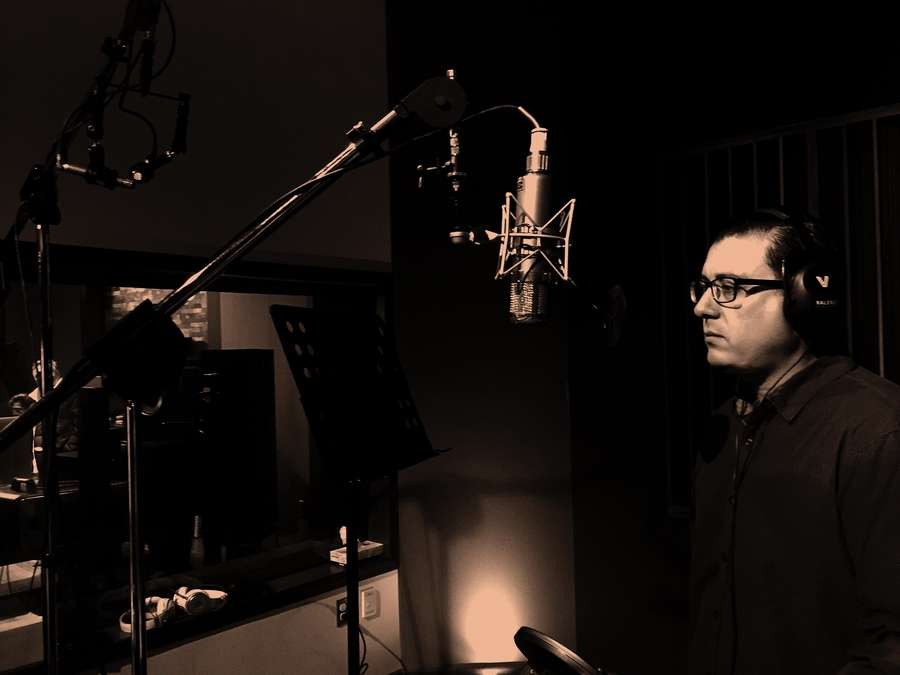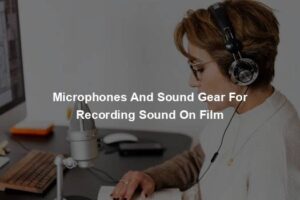
What is Voice Over Recording in Film-Making?
Voice-over (also known as off-camera or off-stage commentary) is a production technique where a voice that is not part of the narrative is used in a radio, television production, film-making, theater, or other presentations.
What Is The Difference Between Voice-Over And Dubbing?
- Voice-over should not be confused with the process of replacing dialogue with a translated version, which is called dubbing or re-voicing. It constitutes an additional soundtrack to the original.
- Voice-over is mostly narrative in nature, does not lip-synch and does not transmit the tonality and overall richness of what is being said in the original footage. It works best for shorter segments of content, such as footage from in-the-field reporting, or conference proceedings, and it risks becoming distracting for longer-form content.
- Voice-over is frequently utilized in news-related segments, digital learning or documentary clips where translation is the primary objective. It has less emphasis on the nuance of tone and emotive content.
Who is a Voice-over Artist?
- A voice-over talent is responsible for recording the off-camera narration or dialogue that accompanies many video productions. Voice-over artists read scripts out loud in order to create an overlaying recording that will provide the video’s audience with additional information that is not revealed through the visual shots. The specific role of a voice-over recording varies depending on the type of video it accompanies.
- In infomercials, commercials and promotional videos, voice-overs can be used to provide additional information on or create excitement about a product or service.
- Television shows and movies often employ voice-over artists to narrate important plot elements, while documentaries and news broadcasts can use voice-over talent to add commentary and context to video and images.
- The key requirements for successful voice-over talent are a good speaking voice and the ability to read a script with the appropriate tone, emotion, clarity, and enunciation.
What Is The Voiceover Recording Process?
- Voice over typically entails the actor, or artist, recording in a studio while reading from the script. The artist must study the script beforehand to perfect their tone, voice, and emotion to ultimately match the production—which can be a brand’s tone or a character’s personality. Timing is also a major consideration, in video or animation productions, as the voice-over recording must match up with the accompanying video, whether that be commercials, documentaries, or the movements of characters. While much of the work is performed by the audio engineers, the voice over artists themselves are also an important piece.
What Are The Attributes Of A Good Voice Over Artist?
- Voice over artists, no matter their area of expertise, are highly trained within voice acting, and quite often are also trained actors. Before anyone can become a professional and successful voice artist, they must learn proper techniques, perfect their voice, and know how to act. A professional voice-over artist has the ability to read a script, consider the required voice and tone, and project exactly that.
- Enunciation is the manner of pronouncing words correctly and clearly. This is very crucial as it can make or break the entire recording project. A great voice actor should be able to pronounce all the words correctly and to enunciate them in a clear and confident manner.
- While voice artistry is something that any talent can develop over time, a certain natural articulateness is always an advantage. This quality comes from being a native speaker of a specific language and also stems from years of experience. Working with a naturally articulate narrator means it won’t take long for him or her to master the script and deliver the lines clearly and interestingly.
- Pacing is another ability to look out for in a voice artist. A narrator who has perfect pronunciation and enunciation will still fail at his performance without proper pacing. By employing the right rhythm and tempo during voice-overs, the talent will be able to bring the needed personality and creativity into the entire narration.
Complete article on [the qualities of a good voice over artist…]
What Is The Importance Of Voice-Over Recording To The Film-Maker?
- Filmmakers use voice-overs to provide quick exposition, tell stories, narrate, and provide an intimate look into the mind of a character. Without the use of the voice-over, the filmmaker would be hard-pressed to establish such a direct connection between the audience and the film. To clearly convey information to the audience. The information presented through the voice-over should supplement the information being presented on the screen. A skillfully executed narration “occurs adjacent to the story” rather than in opposition to it.
- The inclusion of a voice-over allows a filmmaker to efficiently provide information to the audience in a way that is easy to understand. Providing visual aids to accompany the voice-over basically helps the audience to better envision the action as it takes place.
- Documentaries often use a voice-over to provide the viewer with relevant information through the film’s soundtrack. Often, they are also paired with important visual aids (ie, battle footage, photographs, or images of artifacts relevant to the subject matter).
- Voiceovers provide filmmakers with a range of abilities in storytelling that they otherwise would not have. The real power of a voice-over is its ability to communicate directly with the audience. Because there are so few tools available to the filmmaker that allows him to speak directly to the audience, the voice over is an invaluable asset to anyone who wants to establish a direct connection with the audience.
What Are Some Examples Of Voice-over Recording Methods
Off-Screen Voice-Over / Off-Screen Narration
- Off-screen voice-over is the most cost-effective video translation solution because, as its name indicates, it doesn’t require synchronizing to any speakers on-screen. It is used when the character is in the scene location, but not currently on screen. In fact, it’s often called off-screen narration, since the voice-over generally narrates or acts as a counterpoint to the image, as in marketing or instructional videos. Translations don’t have to be edited match any on-screen vocalizations, therefore they can be much more accurate.
- Because off-screen voice-over does not have to synchronize with any speakers, it’s less labor-intensive than any other kind of voice-over for video.
UN-Style Voice Over
- UN-style voice-over is often used for interviews or for someone who is recognizable, mainly because this option does not replace the speaker’s sounds, but records over it. In the beginning, you hear the speaker’s voice and as it lowers in volume, the target translation voice will crescendo so that the viewer comprehends and relates to the genuine voice. It is critical that the sync points are timed perfectly at the start of the dialogue, which lowers the degree of difficulty to sync. In UN-style voice-over cases, you need no more than one male and one female talent to speak for all speakers in your video.
Dialogue Replacement
- It is used when you have eLearning, corporate, or informational videos, where content accuracy is paramount, but where lip-sync isn’t critical. It entails muting the voices in your video and replacing it with the target language. It is a higher level of difficulty because the voice talent has to work to match the voices with the original language. Ultimately, the sound will match closely, but will not be a full lip-sync. For this option, you would need one talent per each speaker in the video.
- It really is critical to note that dialogue replacement is not lip-synched. More importantly, no lip movements are synchronized.
In-studio Interpretation
- This is a very different option because there is no script involved in the session. Rather, a professional interpreter records a simultaneous interpretation while watching the English-language source content, and then the studio engineer mixes it to picture. This is a good option for projects that have large amounts of content, like for example suites of webinars (especially ones that have lots of pauses, starts, and stops, or even conversational spots).
What Is The Impact Of A Good Voice Over On The Audience
- Emotion and Human Touch. Only a professional voice talent can make you feel happiness, compassion or excitement over a video. The voice sets the particular mood of the video and adds a human touch to the story. Other options (such as software-generated voice-overs) are a no go. Besides, professional voice actors know exactly how to add the right highs-and-lows, pauses, and flow to the story, so they’ll always lead emotions the right way.
- Credibility. Potential customers have to trust in the voice talent explanation. Then a native voice-over (of the same Country of the target audience) is the right choice to make them feel more comfortable and receptive to the message.
- Personality. Dull and monotone voices can’t represent any brand the right way, because they tend to push people away instead of growing confidence and identification within them. A professional voice talent adds a strong personality and makes your video stand out every single time.
Conclusion
- Voice-over translation is an important aspect of sharing information with audiences around the globe. Depending on the original video, different styles of voice-over translation may be utilized. No matter which technique is used, voice-over translation offers clear benefits. In addition to presenting information in a manner that is much clearer and more authentic, voice-over translation can also ensure that mood, tone, and other indirect messages are preserved.
- The key requirements for successful voice-over talent are a good speaking voice and the ability to read a script with the appropriate tone, emotion, clarity, and enunciation.







